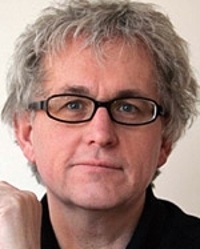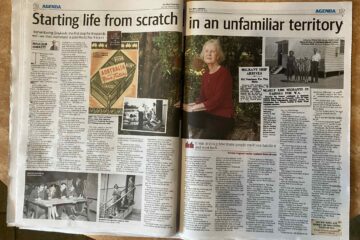Introduction: Identity, Visibility, and Community
Wim Willems’ chapter explores the neglected story of Dutch Eurasians—people of mixed Dutch and Indonesian descent—who migrated to Australia from the former Dutch East Indies (Indonesia) after World War II. The narrative begins with the landmark 1996 De Andere Nederlanders exhibition at the Dutch Consulate-General in Melbourne, which for the first time made visible this community’s distinctive identity through photos, artefacts, costumes, and media. Organised by the Tempo Doeloe club (est. 1989), the exhibition highlighted a hybrid cultural identity shaped by colonial life, exile, and settlement in Australia. Members of this community preserved a lifestyle blending Dutch traditions (Sinterklaas) with Indonesian food and music (krontjong), reflecting a unique Indische culture.
Willems interrogates whether this cultural expression constitutes an ethnic revival or is instead a faint echo of the first generation’s group identity. Despite their presence, Dutch Eurasians were largely invisible in official census data (often counted as Indonesians) and absent from migration studies. This invisibility extended to public discourse and academic research until the 1990s.
Colonial Colour Lines and Migration Policies
Willems argues that a key reason for distinguishing “the Dutch from the Netherlands” and “the Dutch from Indonesia” lies in their differential treatment under colonial and postcolonial racial hierarchies. In the Netherlands Indies, a strict colour line divided white Dutch and Eurasians. This legacy carried over into Australian immigration policy, which for decades operated an unofficial but powerful colour bar.
Though European in heritage, many Dutch Eurasians did not meet Australia’s restrictive racial requirements for postwar migrants. The 1986 census revealed that of the 5,057 Dutch-Indonesians living in Australia, most had migrated between 1947 and 1966, often facing intense screening, bureaucratic delays, and rejection based on skin colour or “non-European” appearance.
Building the White Walls: Australia’s Racial Exclusion
Willems provides an incisive historical overview of Australia’s racial immigration restrictions. Hostility toward Asian immigrants began during the 19th-century gold rushes and intensified with labour conflicts and Pacific Islander indentured labour in Queensland. Federation in 1901 institutionalised the infamous White Australia Policy, enforced through mechanisms like the “dictation test” and wide discretionary powers of customs and immigration officers.
Post-WWII, while Australia began accepting large numbers of European migrants, it maintained its exclusion of Asians, fearing they would not assimilate. Even “New Australians” of European origin were expected to relinquish their languages and customs. Within this climate, Dutch Eurasians fell into a grey zone—officially not Asian, but often treated as such due to appearance.
Emigration Challenges and Bureaucratic Racism
Willems examines the arduous process facing Dutch-Indonesians seeking to migrate to Australia. Through personal case files—such as that of Mr J.J.S.—he illustrates the dehumanising and bureaucratic hurdles imposed: repeated requests for ancestral photographs, documentation of “blood purity,” housing guarantees, and exhaustive genealogical evidence.
Applicants had to prove they were at least 75% European by ancestry and appearance. Even when documentation was provided, people could be rejected due to their physical features. Immigration officers sometimes relied on crude visual assessments—asking if a person “would blend in” on an Australian street. As colonial documents were often destroyed during WWII or inaccessible in post-independence Indonesia, many could not meet these demands. In short, the colour of one’s skin often outweighed education, military service, or character.
Dutch Diplomatic Responses: Treading Carefully
The Dutch Government found itself in a diplomatic bind. On one hand, it had a responsibility to its citizens, including coloured veterans and civilians fleeing Indonesia post-independence. On the other, it wanted to maintain its privileged migration relationship with Australia and avoid confrontation. As a result, Dutch policymakers adopted a pragmatic stance, negotiating case by case while quietly objecting to the implicit racial bias.
Dutch civil servants coined bureaucratic terms like “NPEO” (Non Pure European Origin) and worked behind the scenes to help Eurasians “slip in” under broader quotas. The official approach remained cautious and non-confrontational.
Cracks in the White Walls: Gradual Policy Change
Pressure for change grew throughout the 1960s. Dutch officials increasingly challenged Australian criteria in bilateral negotiations. The turning point came in 1965–66, when Australian Immigration Minister Hubert Opperman introduced modest liberalisations: shortening the wait for permanent residence for non-Europeans already in Australia and allowing case-by-case admission of skilled non-European applicants.
These changes were not comprehensive. Willems notes that discrimination persisted: even as policy shifted, financial assistance for passage was still restricted to white Dutch. In practice, Dutch Eurasians still faced high rejection rates well into the late 1960s. A 1968–69 analysis found that three-quarters of Dutch-Indonesian applicants under the Assisted Passage Scheme were still being turned away.
Public Criticism and the Slow Collapse
The early 1970s brought mounting criticism of racial migration policy—from domestic civil rights movements, international scrutiny, and Australia’s own strategic reorientation towards Asia. By 1971, Australian Prime Minister William McMahon publicly embraced the idea of a “truly multiracial society.” Labour Party policy and public opinion began shifting in favour of racial non-discrimination. Australia began to dismantle its racial immigration framework—but slowly.
For the Dutch Eurasians, however, it was largely too late. By the time formal restrictions eased, many had already settled elsewhere—primarily in the Netherlands and the United States. Australia’s multicultural turn did not undo the years of exclusion, nor did it retroactively include those previously turned away.
Analysis and Significance
Willems’ chapter presents a detailed and sobering account of postcolonial racial gatekeeping in Australia’s migration system. It highlights the contradictions between official policy and unofficial practice, exposing the racialised double standards applied even within so-called “European” migration categories.
The case of the Dutch from Indonesia complicates simple national or ethnic identities. These migrants were Dutch citizens, European in cultural orientation, and often loyal to Dutch institutions. Yet, their mixed heritage rendered them suspect. Australia’s obsession with racial purity clashed with its postwar migration needs, and Eurasians became casualties of a transitional era between colonialism and multiculturalism.
Willems also gives voice to an overlooked community, placing them within broader debates about race, identity, migration, and memory. His work is a powerful reminder that bureaucratic indifference and racial bias are not merely historical issues but remain embedded in systems that shape people’s lives.
Biography: Wim Willems

Prof. Wim Willems (1951–2016) was a renowned Dutch historian and cultural sociologist specialising in migration history, identity formation, and memory studies. He held the chair of Social and Cultural History at Leiden University and served as director of the Centre for Modern Urban Studies (MUS) at The Hague University of Applied Sciences.
Willems’ scholarship focused on the social histories of Dutch migrant communities, including Indo-Europeans, Surinamese, and postcolonial groups. His interdisciplinary work often bridged history, anthropology, and sociology, combining archival research with oral histories to illuminate underrepresented voices in Dutch and global history.
Among his notable publications are:
- Spiegelpaleis Europa (1997), on European identity and nationalism;
- De Uittocht: Indische Nederlanders en de dekolonisatie van Indonesië (2001), a major study of Dutch Eurasians’ postcolonial migration;
- Contributions to The Other Dutch, which foreground the complexities of Dutch-Indonesian identities in the diaspora.
Willems was known for his clear writing, critical empathy, and commitment to addressing colonial legacies and social exclusion. His work continues to influence contemporary studies of postcolonial migration, multiculturalism, and the enduring impact of race in Western societies.


